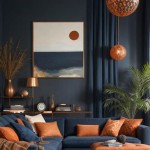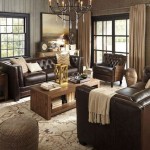How To Decorate the Bedroom: A Comprehensive Guide
The bedroom serves as a sanctuary, a private space for rest, relaxation, and rejuvenation. Its design and decor significantly impact mood, sleep quality, and overall well-being. Transforming this essential space into a personalized haven requires careful consideration of various elements, from color palettes and lighting to furniture placement and accessories. This guide provides a comprehensive overview of how to decorate a bedroom effectively, creating a comfortable and aesthetically pleasing environment.
Choosing a Color Palette
Color profoundly affects mood and perception. Selecting the appropriate color palette for a bedroom is crucial for establishing the desired atmosphere. Consider the psychological associations of various colors and how they might contribute to the overall ambiance. Soft, muted tones, such as blues, greens, and lavenders, are often recommended for promoting calmness and relaxation. These hues tend to create a serene and tranquil environment conducive to sleep.
Neutral colors, including whites, grays, and beiges, offer versatility and can be easily adapted to various design styles. They provide a blank canvas upon which to layer textures and incorporate accent colors. These neutral foundations also allow for flexibility in changing the decor over time without requiring a complete overhaul. A monochromatic color scheme, featuring different shades of a single color, can create a sophisticated and elegant look. For example, varying shades of gray, from light to dark, can produce a visually appealing and cohesive design.
Alternatively, bolder colors, such as deep reds, vibrant oranges, or rich purples, can add drama and personality to a bedroom. However, it is essential to use these colors sparingly, as excessive use can be overwhelming and disruptive to sleep. They are best incorporated as accent colors through artwork, throw pillows, or decorative accessories. Employing the 60-30-10 rule can be a useful strategy for balancing colors: 60% of the room should be the dominant color, 30% should be a secondary color, and 10% should be an accent color.
Optimizing Lighting
Lighting plays a pivotal role in setting the mood and enhancing the functionality of a bedroom. A well-lit bedroom should incorporate a combination of natural light, ambient lighting, task lighting, and accent lighting. Maximizing natural light is crucial. Keep windows clean and avoid heavy curtains that block sunlight. Consider using sheer curtains or blinds that allow light to filter through while maintaining privacy.
Ambient lighting provides overall illumination for the room. This can be achieved through ceiling fixtures, chandeliers, or recessed lighting. Dimmable switches allow for adjusting the intensity of the light to suit different activities and moods. Task lighting is essential for specific activities such as reading or getting dressed. Bedside lamps, floor lamps, or adjustable wall-mounted lights provide focused light for these tasks. Ensure that the lamps are positioned at a comfortable height and provide sufficient light without causing glare.
Accent lighting highlights specific features of the room, such as artwork, architectural details, or decorative accessories. This can be achieved through spotlights, picture lights, or LED strip lights. Accent lighting adds depth and dimension to the room, creating visual interest and enhancing the overall aesthetic. Consider using warm-toned light bulbs, as they create a more inviting and relaxing atmosphere compared to cool-toned light bulbs.
Selecting Furniture and Layout
The selection and arrangement of furniture are central to creating a functional and visually appealing bedroom. Prioritize essential pieces, such as a bed, a dresser, and bedside tables, before considering additional items. The bed is the focal point of the room and should be positioned strategically. Avoid placing the bed directly in front of a door or window, as this can disrupt the flow of energy and create a sense of unease. Instead, position the bed against a wall that allows for easy access on both sides.
The size of the furniture should be proportionate to the size of the room. Avoid overcrowding the space with bulky furniture, as this can make the room feel cramped and uncomfortable. Opt for streamlined and minimalist designs that maximize space and create a sense of openness. Nightstands should be placed on either side of the bed, providing convenient storage for books, lamps, and other essentials. Choose nightstands that are the same height as the mattress to ensure easy access to items.
Dressers and wardrobes provide essential storage for clothing and accessories. Consider built-in storage solutions to maximize space and minimize clutter. Alternatively, choose dressers and wardrobes that complement the overall design style of the room. A seating area, consisting of a comfortable chair and a small table, can create a cozy and inviting space for reading or relaxing. Position the seating area near a window or in a corner of the room to create a sense of privacy and seclusion. Avoid blocking doorways or creating obstacles that impede movement.
Incorporating Textiles and Textures
Textiles and textures add depth, warmth, and visual interest to a bedroom. Layering different textures can create a luxurious and inviting space. Consider incorporating a variety of materials, such as soft cotton, plush velvet, and natural linen. Bedding is a crucial element in creating a comfortable and inviting bedroom. Choose high-quality sheets, blankets, and comforters that are soft, breathable, and durable. Consider the season when selecting bedding materials. Lighter fabrics, such as cotton and linen, are ideal for warm weather, while heavier fabrics, such as wool and flannel, are better suited for cold weather.
Throw pillows and blankets add pops of color and texture to the bed. Experiment with different sizes, shapes, and patterns to create a visually appealing arrangement. Choose pillows and blankets that complement the overall color palette and design style of the room. Window treatments, such as curtains, blinds, or shades, provide privacy, block out unwanted light, and add a decorative element to the room. Choose window treatments that complement the overall design style of the room and provide the desired level of light control.
Rugs can define the space and add warmth and comfort to the floor. Choose a rug that is large enough to anchor the furniture and define the seating area or the bed. Consider the texture and pattern of the rug, as it can significantly impact the overall aesthetic of the room. A plush, shag rug can add a sense of luxury and comfort, while a patterned rug can add visual interest and personality.
Adding Personal Touches and Accessories
Personal touches and accessories are essential for creating a bedroom that reflects individual taste and style. Artwork, photographs, and decorative objects add personality and visual interest to the room. Choose artwork that complements the overall color palette and design style of the room. Consider incorporating a variety of sizes and styles to create a visually dynamic arrangement. Arrange artwork in a symmetrical or asymmetrical pattern to create a balanced and harmonious composition.
Photographs can add a personal touch to the room, reminding one of cherished memories and experiences. Display photographs in frames or create a photo wall to showcase a collection of favorite images. Decorative objects, such as vases, sculptures, and candles, can add visual interest and personality to the room. Choose objects that reflect individual interests and hobbies. Arrange objects in groupings or vignettes to create visually appealing displays.
Plants can add life and vibrancy to a bedroom, improving air quality and creating a sense of calm and tranquility. Choose plants that are easy to care for and thrive in low-light conditions. Consider incorporating a variety of plants, such as succulents, ferns, and snake plants. Candles and essential oil diffusers can create a relaxing and inviting atmosphere in the bedroom. Choose scents that promote relaxation and sleep, such as lavender, chamomile, or sandalwood. Ensure that candles are placed safely and are not left unattended.

Stylish Bedroom Wall Decor Ideas For Modern N Interiors

30 Stylish Bedroom Wall Decor Ideas And Tips

Bedroom Makeover In Low Budget Diy Decoration Ideas

Tips For Decorating A Stylish Bedroom Sherrelle

50 Exclusive Bedroom Decor Ideas From Livspace Homes

Stylish Bedroom Decor And Interior Tips Decorpot

How To Decorate Your Bedroom 10 Decoration Ideas Brighten Up Space

20 Bedroom Wall Decor Ideas To Spruce Up Your Space Displate Blog

Simple Bedroom Decorating Ideas Home Design Jennifer Maune

Budget Friendly Small Bedroom Decorating Ideas







